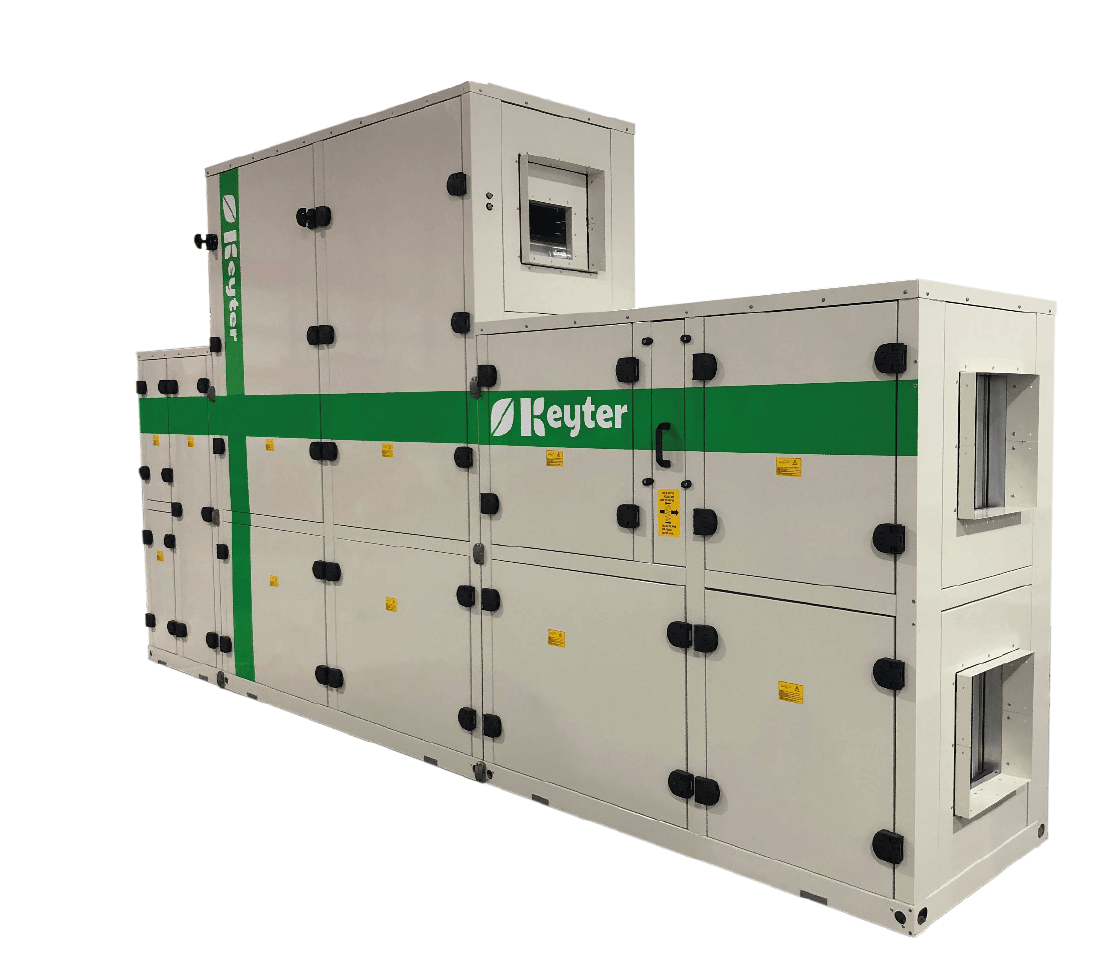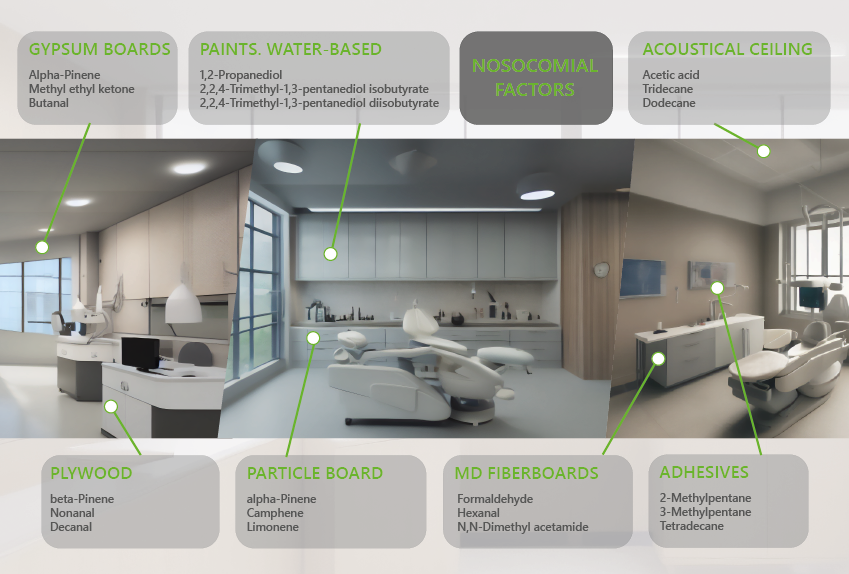Ventilation and Volatile Organic Compounds (VOCs)
39th Valencia Hospital Engineering Seminar
Hospital environments, not only operating rooms, infectious wards, burns or ICUs, are complex and require special measures to achieve healthy indoor air quality (IAQ), making them safe workplaces and optimal environments for patients and their companions. To achieve these air qualities requires the use of Air Handling Units (AHUs), selected and custom-designed for the needs of the different rooms.

The objective of this study is to determine the existing pollutants in the environment, not only by human sources (CO2), but also by external agents (particulate matter, products of road traffic, possibility of radon …) and internal (disinfectants, cleaners, furniture, paints, varnishes, fabrics …), and not only list them, but also determine their sources, how to evaluate emissions and ventilate them properly.
Methodology
For the determination of existing Volatile Organic Compounds (VOCs), Semivolatile (SCOVs) and Total Organic Compounds (TCOVs), the sources must be known and the amount of emissions from each of them must be evaluated.
To this end, a list should be made of:
– Materials used in construction and furnishings (m2).
– Existing consumables (quantities used).
Once the amount of emissions has been determined and the sources have been located, the necessary ventilation rates must be calculated, using the Dilution Method (UNE EN 13779 and UNE EN 16798-3), to reduce their concentrations to values admitted by the World Health Organization (WHO). The ventilation flow necessary for the dilution of a known emission is determined by the emission rate and the admissible concentration level in the room. Do not forget that the air diffusion must be optimal, the selection of diffusers and their location must achieve high ventilation efficiencies.
Results
It is found that furniture emissions, in the form of formaldehyde, can exceed the permitted limits. Each m² of standard chipboard requires between 2 and 2.5 m3/h of outside air to ventilate the formaldehyde it emits.
In the same way, the use of disinfectants and detergents brings chemicals into the environment that can be harmful. Special attention to dental cabinets, the use of lathes generates a high amount of aerosols.
The detection of hexamethyldisiloxane, octamethyltrisiloxane, decamethylcyclopentasiloxane, sevoflurane, desflurane, terpenes, benzaldehyde, benzoic acid, aromatic and halogenated hydrocarbons, ketones, aldehydes, limonene… is more than probable and the levels in air must be known for their control or specific treatment.
Conclusions

Current ventilation is insufficient to achieve the desired Indoor Air Quality (IAQ) conditions. The use of current regulations and the calculation methods used must be reviewed and tightened so that the ventilation needs in critical areas of a hospital and in the rest of the facilities are really known. The use of adequate and well dimensioned air conditioning and ventilation equipment is crucial. In this aspect, the Air Handling Units (AHUs) must be adequately selected, in terms of performance and air flow rates.
#AvoidPoorlyVentilatedEnvironments #ChangeToGreen #TheGreenRevolution

Author: Jose J Arboledas
Keyter Training and Special Projects Manager
We care about the environment and quality.
Find out how we do this


